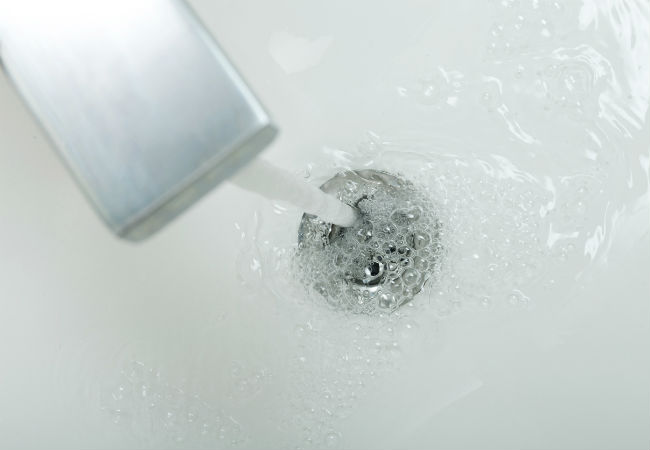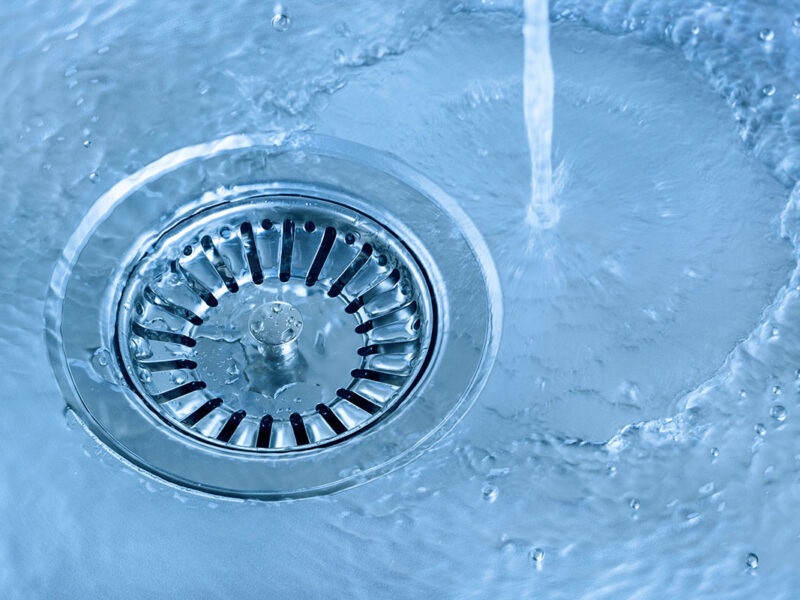Quick Methods To Correct A Slow-Draining Sink
Quick Methods To Correct A Slow-Draining Sink
Blog Article
What are your ideas about Three Common Ways to Fix a Slow Drain?

Introduction
We have actually all existed: You're cleaning your teeth or washing your hands, and you see the water pooling in the sink. Instead of quickly swirling down the drain, it sticks around, transforming your once-refreshing early morning routine right into a small swamp scene. A slow-draining sink isn't simply aggravating; it's usually an indicator of larger pipes problems hiding under the surface area. The good news is that most slow-draining sinks can be taken care of with a little know-how, a couple of basic tools, and some persistence. Ready to tackle this project head-on? Allow's roll up our sleeves and dive right in.
Recognizing the Root Causes Of a Slow-Draining Sink
Before you begin poking around in your pipelines, it aids to know what could be causing the slowdown. Understanding the origin makes it simpler to choose the best fix.
Tools and Materials You'll Need
The right devices make all the difference. Luckily, you will not need a totally equipped plumbing technician's van to finish the job.
Step-by-Step Overview to Fixing a Slow-Draining Sink
Now, allow's get involved in the nitty-gritty. This detailed process will certainly direct you with basic methods to recover your sink's drain.
Step 1: Remove and Clean the Stopper
Often, the stopper (that little plug you push down to block water) is the first culprit. Remove it thoroughly and clean off any type of hair or substance trapped around its base. Rinse it completely before placing it back in position.
Step 2: Make Use Of a Plunger to Remove Debris
Got that plunger all set? Position it over the drain and offer it a few company pumps. The concept is to produce suction that can loosen any type of blockage. If you see littles particles floating up, you're on the appropriate track.
Step 3: Try a Drainpipe Serpent or Wire Hanger
If the plunger doesn't suffice, it's time to bring out the drain serpent. Carefully feed it into the drainpipe and twist as you go. You could really feel some resistance-- that's most likely the obstruction. Keep twisting and pulling till you get rid of the blockage. If you do not have a drain snake, a corrected cable wall mount can operate in a pinch.
Tip 4: Use a Do It Yourself Drainpipe Cleaner
A natural cleaner made from baking soda and vinegar can break down recurring grime. Put half a cup of baking soda right into the drainpipe, followed by half a cup of vinegar. Allow it fizz for about 15 minutes, after that flush with hot water. This chemical reaction frequently does wonders for small clogs.
Tip 5: Reconstruct and Examine the Sink
Put every little thing back with each other and run the faucet. Does the water currently swirl down the drain at a respectable speed? If yes, provide yourself a pat on the back. Otherwise, do not misery-- there are still a couple of even more dress up your sleeve.
Essential Tools for DIY Services
A bettor is your best starting point. A small, sink-sized plunger produces suction that can displace minor clogs. For more consistent obstructions, a drain serpent (sometimes called a plumbing professional's auger) works marvels. A set of gloves, a flashlight, and maybe a set of safety goggles are also useful.
Recommended Cleansing Solutions
Mild meal soap and warm water can help break down oily accumulation. A mix of cooking soft drink and vinegar is a reliable natural home remedy, and enzymatic cleaners use an even more environmentally friendly method. Keep chemical drain cleaners as a last resort, as they can be rough on your pipes.
Usual Perpetrators Behind Slow Water Drainage
So, what's clogging things up? Commonly, it's a blend of everyday debris-- think hair, soap residue, tooth paste residue, and leftover food particles. Over time, these little bits gather and hold on to the pipe walls, progressively tightening the passage and making it harder for water to pass through. In many cases, natural resource from difficult water can also include in the gunk, developing the excellent storm for stubborn clogs.
When is it Time to Act?
If you observe the water draining slower than typical, it's an excellent concept to step in earlier rather than later on. Waiting too long might cause finish blockages, undesirable smells, or even pipe damages. If the water takes greater than a few secs to clean out after turning off the faucet, consider it a warning and get ready to place on your do it yourself hat.
Security First: Precautions and Preparations
Prior to you launch into unclogging mode, consider safety and security. You're handling potentially filthy water and debris, so slip on a pair of gloves. If you're making use of chemical cleansers, make sure the space is well-ventilated and comply with the instructions on the label.
Safety Gear and Office Configuration
Lay down some old towels or cloths around the sink area to capture dashes. Eliminate any type of items that might get in your means, like soap dispensers or tooth brush holders. Ensure you have good lighting-- order a flashlight if needed.
Alternative Methods for Stubborn Clogs
Not all obstructions are produced equivalent. If your sink still rejects to comply, consider these alternate services.
Sodium Bicarbonate and Vinegar Method
We already discussed this, but it's worth keeping in mind once more. This gentle, environment-friendly method is safer than chemical cleaners and usually rather efficient.
Enzymatic Drain Cleansers
Enzyme-based cleaners utilize all-natural bacteria to digest organic matter. They're an excellent choice if you're aiming to prevent harsh chemicals. Simply bear in mind, they might take a bit longer to work their magic.
Chemical Drain Cleaners: Benefits And Drawbacks
Chemical cleansers can blow up with difficult clogs quickly, yet they're not without disadvantages. They can produce heat and fumes, damage pipelines if made use of exceedingly, and pose environmental risks. Utilize them moderately, and constantly adhere to the instructions thoroughly.
Preventive Measures to Maintain Your Sink Flowing
Prevention is the most effective treatment. By adopting a couple of easy routines, you can keep your sink from decreasing to begin with.
Regular Cleansing Habits
Wipe down the sink basin and component location routinely. Eliminate hair or food bits prior to they have an opportunity to wash down the drainpipe.
Avoiding Harmful Substances Down the Drain
Think twice prior to unloading coffee grounds, grease, or coarse vegetable scraps down the sink. These culprits cling to pipeline wall surfaces, producing blockages in time.
Regular Maintenance Checks
Schedule a fast regular monthly evaluation. Run hot water via the sink for a few minutes, taking note of the circulation. If it seems sluggish, act quick before it comes to be a full-blown obstruction.
When to Call an Expert Plumbing
Occasionally, regardless of just how hard you attempt, that clog simply will not budge. That's when it's time to bring in the pros.
Indications That Show an Extra Serious Issue
If your sink drains pipes gradually despite numerous efforts, or if you see water supporting in other components (like your shower or toilet), you might have an extra significant plumbing issue lurking deeper in the system.
Balancing DIY Efforts with Expert Aid
While do it yourself can conserve you money and provide a sense of accomplishment, there's no shame in calling a professional. An expert plumbing technician can evaluate your entire pipes configuration, guaranteeing there's no underlying damage or long-term trouble that might cost you more later on.
Comparing Prices and Long-Term Solutions
Prior to deciding, consider the big picture. An economical, quick fix may address the problem momentarily, but buying a more irreversible solution might conserve you cash and tension in the future.
Weighing the Costs of DIY vs. Specialist Repairs
Do it yourself repairs usually set you back little bit greater than the price of a bettor or a bottle of baking soda. Professional services, on the other hand, included a price yet might protect against repeated issues and costly repairs later.
Buying Top Quality Fixtures and Upgrades
If your sink's design contributes to constant obstructions, it may be worth upgrading to higher-quality components or modifying the pipes design. Consider this an investment in your home's capability and comfort.
Verdict
A slow-draining sink can seem like a minor irritability, however it's typically an indication that your plumbing requires a little TLC. By recognizing the root causes, utilizing the right tools and methods, and committing to basic preventive measures, you can maintain your sink flowing openly. And when all else falls short, never ever be reluctant to contact a specialist-- your home's pipes is worth the financial investment in treatment and maintenance.
4 Tips to Fix a Slow Draining Sink
Removing the Pop-Up
This is a great place to start when it comes to troubleshooting a slow draining sink. If your sink has a pop-up, carefully take it out and remove debris that has built up around the tool. This will also allow you to see if there are any significant blockages in the drain that you can pull out on your own to help clear up the issue.
Use a Zip-It Tool
Like a snake for a large drain, a zip-it tool helps clear out any debris or hair from a sink drain. A tool like this can be used with a drain that pops out or not as it s thinner than most snake-like tools.
Use a Drain Cleaner
Whether making an at-home cleaner or buying a solution at the store, this is a common fix many turn to when it comes to a slow draining sink. There are several options available for purchase at local supermarkets, but for those who prefer to create their own solution, one of the most common is the following.
How to Unclog a Drain Naturally
Pour boiling water down the drain Pour cup of baking soda down the drain Pour cup of vinegar down the drain Wait 10 minutes Pour boiling water down the drain again Turn on the hot water faucet to clear out the solution Use a Plunger
As a worst-case scenario option, a plunger may be a good option for those who are still struggling to get debris out of their drain. This could be especially useful if there is a large item that you suspect may be significantly stuck down the drain.
https://www.abaileyplumbing.com/blog/2021/august/4-tips-to-fix-a-slow-draining-sink/

I discovered that write up on Solved! How to Fix a Slow Sink Drain while doing a search on the internet. Make sure you set aside a second to share this blog entry if you appreciated it. I am grateful for being here. Kindly pay a visit to our site back soon.
Pricing Report this page